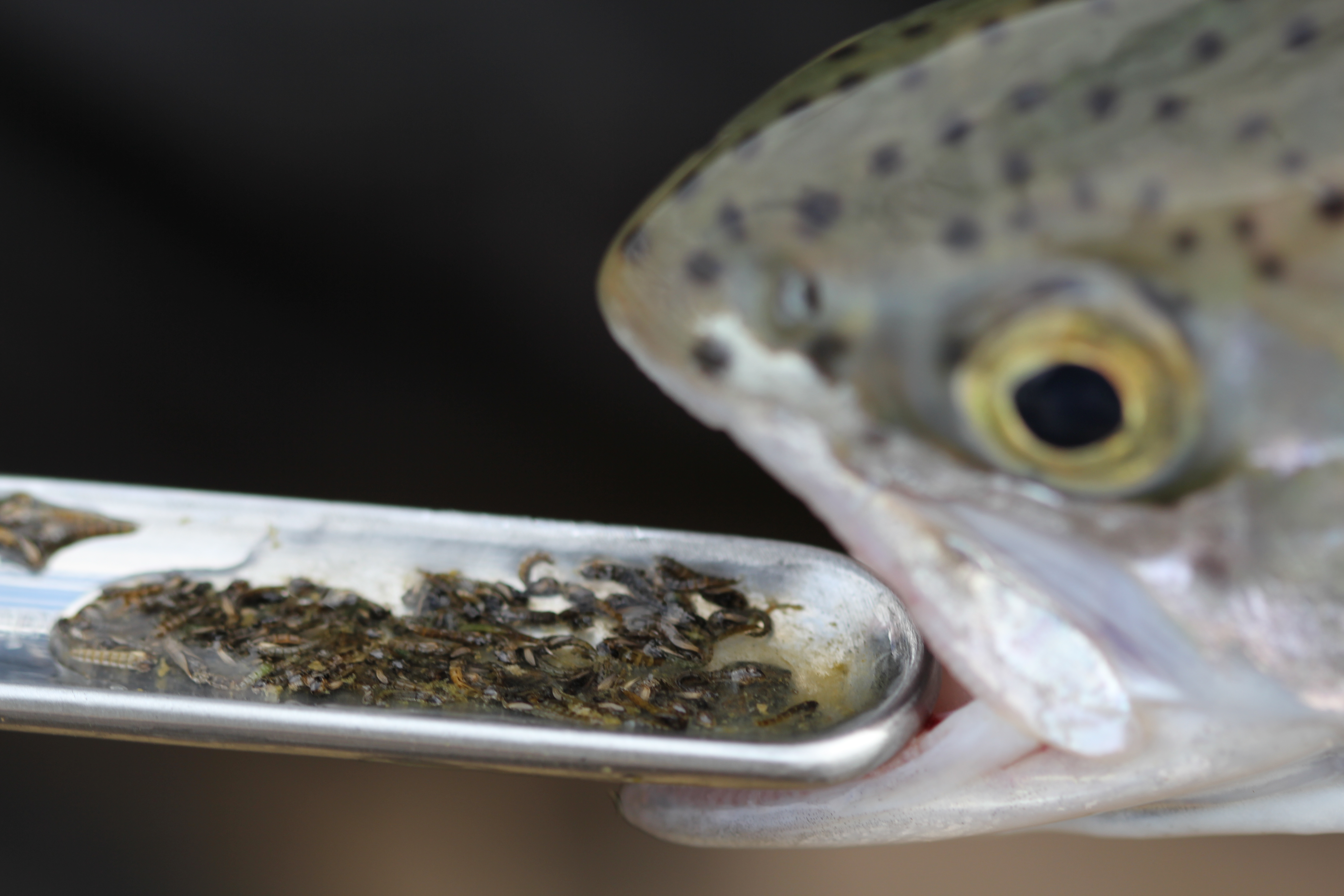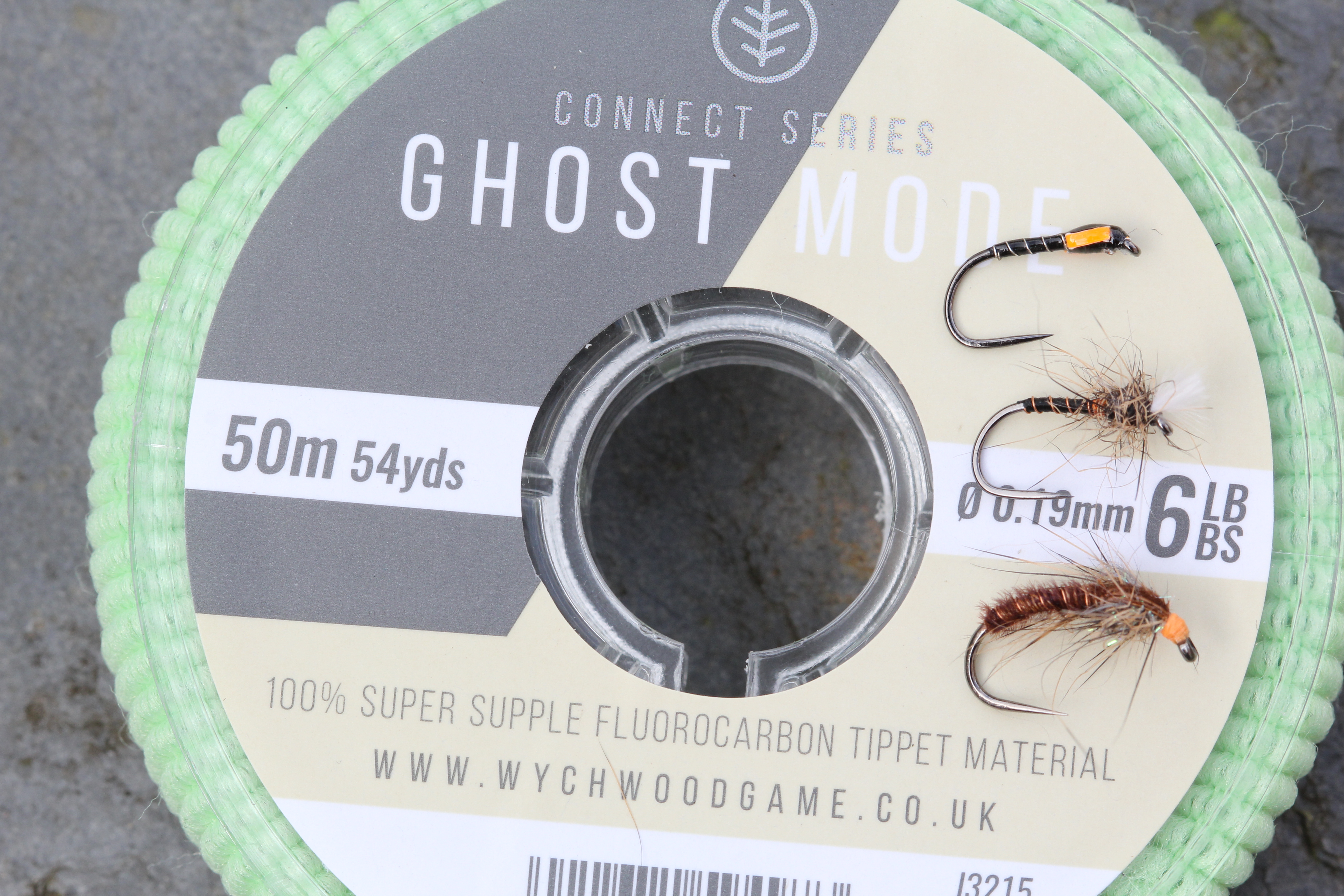By Andy Taylor
Spring sees the start of one of best seasons in the small water fly fishing calendar as the trout switch on to one of their major food sources…the buzzer.
As a guide and instructor on small stillwaters I often hear anglers saying “ I just can’t catch on buzzers.” Moving from the comfort of fishing lures throughout the winter months and catching, to fishing flies far smaller, feels like it goes against the grain for many small water anglers. Whilst I enjoy pulling a Blob or Zonker on an intermediate line, or figure-of-eighting a Cat’s Whisker on a floater, there is probably nothing more enjoyable than catching the first fish of the season on a buzzer. It seems to fit well with the longer lighter days, the first swallow, the trees bursting into to life- the feel good factor is here and buzzer fishing is certainly one of those!
As with other flies we use when fly fishing, confidence in patterns is essential. This travels down the rod to the fish, the flies stay on the leader for longer and in turn we catch, and our confidence grows. Catching fish on buzzers is no different. Once you get confidence in the flies and techniques you will fish them more and for longer tweaking the presentation, method and flies when the time is right.
There are a range of techniques that successful buzzer anglers use: straight-line nymphing, swinging a team around in the ripple, the washing line, under the indicator and dry, with patterns such as Shipman’s Buzzers, Suspender Buzzers and various Cul’s/Shuttlecock patterns working well. In most instances, I and other buzzer anglers, like to fish more than one fly and this, for a beginner, can add another barrier and worry! How do I fish more than one fly? What about tangles?
Meal For One
So where does a newbie start with buzzers? For now stick with your floating line, whilst some anglers fish the range of tip lines out there (the Wychwood Little Dipper being my favourite) the floater is by far the best. Those anglers who like to fish with just one fly can do so. You will be more successful buzzer fishing if you can fish a team of two or three flies as you can cover different depths, fish different sizes of buzzers and also different colours. However, if you feel more confident with just one fly then you will still catch.
Fishing a single ‘dry’ Buzzer is the easiest tactic to master. However, this won’t be effective until late into the buzzer season; for me in the Midlands that tends to be May time. At this time of year the fish will be high in the water and be used to taking the emerging buzzer as it hatches along with the shucks they leave behind. A single Suspender Buzzer or Shuttlecock Buzzer in black or olive in size 12 and 14’s will work well. However, the killing ‘dry’ buzzer for me is the Shipman’s Buzzer. This pattern in black, olive and hare’s ear in size 14 and 16 are my favourites. I would fish these on a floating line 10-12ft leader with a b/s of 4 to 6lb. I would start fine with my leader choice, degreasing the first four-foot of leader by the fly with leadersink to hide this from the fish. The leader needs to sit in the surface not on it. I apply a small amount of floatant to the fly and some Mucilin to the end of the fly line to give the perfect presentation. With some shop bought Shipman’s the white shucks are too long. I trim these down so that they’re about 5mm in length, maybe shorter, depending on hook size.
.jpg) A fin-perfect early season blue from Marton Heath Trout Pools caught on a Coves Pheasant Tail.
A fin-perfect early season blue from Marton Heath Trout Pools caught on a Coves Pheasant Tail.
Get the Depth Right
Failure when fishing a single buzzer subsurface on a floater I feel is down to the fly not fishing at the right depth. Early season buzzer work i.e. through the month of March should be mainly about depth. As such the epoxy or thread buzzers are best. Black buzzers in size 12 and sometimes ten are the flies to try. In addition red buzzers are also worth a try for those fish that have spent the winter-feeding on bloodworm on the lake bottom, again in a size ten or 12. Your leader needs to be as fine as you can get away with. I use Wychwood Ghost Mode Fluorocarbon for my leaders when buzzer fishing with a single fly. Leader length would depend on depth of water, but on small stillwaters, which are 6-8ft deep I would use a 10-12ft leader. Breaking strain would be dictated by the water clarity, size of buzzer to be fished and average size of fish, I usually opt for 6lb. Employ a slow figure-of-eight retrieve or long slow draw and pause. You need to watch your fly line for takes. Keep an eye on any kinks in your fly line near your leader or watch the loop fly line between the rod tip and water. You will see your floating line straighten/tighten before you feel it on your finger. Employ a strip strike (long sharp draw/pull on the fly line) to set the hook.
Target the shallower water first as this is where the water will be warmer at this time of year and where the first buzzer hatches will start. In addition fish your buzzer ALL the way in- that is until you have around a foot of fly line out of the tip. The fish will take under your rod tip especially in pools where the clarity is poor.
As the buzzer season progresses the fish will be higher in the water and now is the time to move away from the big epoxy type buzzers and fish smaller patterns or lightweight buzzers such as the ‘Scruffy Buzzers’ which have come into fashion in recent years. Switching colour from black to olive will help. As mentioned earlier don’t forget those dry buzzers.

Try A Team
Buzzer fishing allows anglers the opportunity to fish a team of two or three flies. This has many advantages: you can cover a range of depths- important for early season buzzer fishing as the trout will move up and down in the water column as the buzzers move; you can fish a mix of buzzers in different colours and sizes and it will increase your chances of catching good numbers of trout. If you are fishing a team of three space your flies an equal distance apart. I tend to use either a 12ft or 15ft leader of one breaking strain with flies 4ft or 5ft apart on the respective leader length. Most anglers use a three-turn water knot for attaching a dropper. These droppers should be around 15cm in length. Early season I like a Coves Pheasant Tail or Bloodworm on the point (size 10 or 12) and small black buzzers in size 12 and 14 on the droppers. On bright days pick out the patterns with a bit a flash such as a holographic rib or collar in their tying.

One word or warning… buzzer takes can be savage, arm wrenching and will get the heart racing!! Those experienced buzzer anglers out there will know what I mean! You are also likely to come across the educated, experienced trout so make such your drag is set and you’ve checked you backing knot!
Five Tips For Successful Buzzer fishing
1. Fish as fine a leader as you can. This may well depend on fishery rules but if you can fish leaders of 4 to 6lb.
2. Early season buzzers should be black or red fished deep. As the season progresses move to olive and black in smaller sizes (12,14 or 16).
3. The best retrieve in no retrieve! Let your buzzers swing round in the wind or employ a slow figure-of-eight retrieve with the occasional slow long draw to raise your flies up in the water.
4. When the fish are up in the water, typically in late spring, target the rising buzzer feeding fish with dries such as Shipman’s, F- Flies and Shuttlecock patterns.
5. If you’ve not fished with two or three flies now is the time to try. Use a two or three water knot to attached one or two droppers to your leader. Slow your casting down, open your casting loop and focus on short casts and good turnover.
.JPG)
About The Author:
Andy Taylor is a qualified fly fishing instructor who has fished for England on several occasions. He is the current bank national and international champion and part of the Wychwood ProTeam. Andy can be booked for tuition and guided days on smallwaters in Cheshire and the Midlands.
Website: www.flyfishingtuitioncheshire.co.uk
E-mail: andy_g_taylor@yahoo.co.uk

